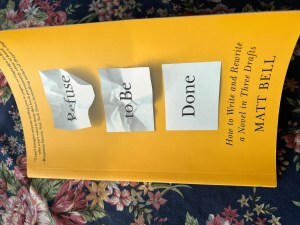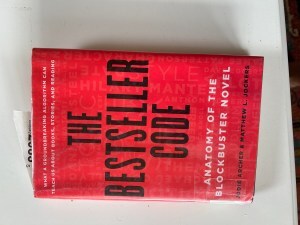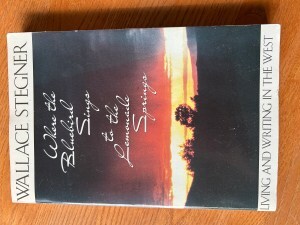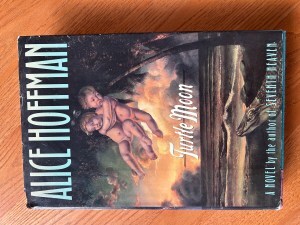Getting Inspiration from Writing Books or from Writers
Kate Flora: Through some fluke of scheduling, I am blogging this week on Monday and again on Friday. Regularly finding topics to blog about is always a challenge. Sometimes there’s something happening in the book I’m writing that lends itself to a post. Sometimes there’s something happening in a book I’m reading. Often, when neither of those arenas provides a subject, I look around or wander around the cottage, waiting for inspiration to strike.
 We’ve styled the Maine Crime Writers blog as all things writing and all things Maine, a lovely broad description which lends itself to all kinds of musings. As I wandered the cottage today, I found that there were many books about writing lying about in various stages of being read. On the windowsill beside the binoculars and the bird book was Refuse to Be Done, a book about editing. I’ve barely scratched the surface so far, but I look forward to Matt Bell’s advice on revision soon, when I finish the current WIP, the ninth Joe Burgess, Deliver Us from Evil. I’m 70K words into a book that will probably run around 85K, so the end, while still somewhat a mystery to me, is in sight.
We’ve styled the Maine Crime Writers blog as all things writing and all things Maine, a lovely broad description which lends itself to all kinds of musings. As I wandered the cottage today, I found that there were many books about writing lying about in various stages of being read. On the windowsill beside the binoculars and the bird book was Refuse to Be Done, a book about editing. I’ve barely scratched the surface so far, but I look forward to Matt Bell’s advice on revision soon, when I finish the current WIP, the ninth Joe Burgess, Deliver Us from Evil. I’m 70K words into a book that will probably run around 85K, so the end, while still somewhat a mystery to me, is in sight.
When I was beginning writer, I used to hate revision. The years have taught me to refuse to be done until the book feels shaped and finished. Sometimes, after multiple versions, maybe even five or six, it will come down to one word I’m not happy with. I expect this book will have many things I’m not happy with. I remind myself that story goes in during the first two drafts, and craft in the next two or three.
 On my bedside table, on top of Gerry Boyle’s last McMorrow, is John Gardner’s The Art of Fiction. It’s a book I’ve returned to periodically over the last forty years. When I first read it, his judgments seemed so harsh, and what he deemed to be the requirements for being a writer so far from my own abilities, that I was depressed and put the book aside. But over the years, both as to my own writing, and in my teaching, I have found much value in what he says. Yes, I still think he’s kind of a literary snob, which is something many of us who write “genre fiction” face repeatedly, but he’s also wise and has given me some great exercises for my writing classes.
On my bedside table, on top of Gerry Boyle’s last McMorrow, is John Gardner’s The Art of Fiction. It’s a book I’ve returned to periodically over the last forty years. When I first read it, his judgments seemed so harsh, and what he deemed to be the requirements for being a writer so far from my own abilities, that I was depressed and put the book aside. But over the years, both as to my own writing, and in my teaching, I have found much value in what he says. Yes, I still think he’s kind of a literary snob, which is something many of us who write “genre fiction” face repeatedly, but he’s also wise and has given me some great exercises for my writing classes.
Gardner says this:
What the logical progress of an argument is to nonfiction, event-sequence is to fiction. Page 1, even if it’s a page of description, raises questions, suspicions, and expectations. The mind casts forward to later pages, wondering what will come about and how. It is this casting forward that draws us from paragraph to paragraph and chapter to chapter . . . the moment we stop caring where the story will go next, the writer has failed, and we stop reading.
On the coffee table, there is a book my friend Ruth suggested, The Bestseller Code. I have an approach/avoidance relationship with a book that describes using an algorithm to analyze why certain books have become bestsellers. I would like to write a bestseller, and yet while I am sure the advice is sound, using a method that doesn’t smack of creativity and imagination puts me off, so I am only reading small bits at a time.
an approach/avoidance relationship with a book that describes using an algorithm to analyze why certain books have become bestsellers. I would like to write a bestseller, and yet while I am sure the advice is sound, using a method that doesn’t smack of creativity and imagination puts me off, so I am only reading small bits at a time.
I would rather be taught by reading great writers. Another book that sits on the bookshelf in my office, that I pick up and read bits of from time to time, is Wallace Stegner’s Where the Bluebird Sings to the Lemonade Springs: Living and Writing in the West. Stegner shows, by example, how a writer can create magic by the quick juxtaposition of words and images. I have always read to be enchanted.
Here’s an example:
 My first five years were constant motion, and what I retain of them is no more than flits and flashes, images on a broken film flapping through the projector: rare sun on the roof of our tent in the deep woods where now stands Redmond, Washington; the musty, buttery odor of the bread crusts distributed from a dishpan at mid-morning in the Seattle orphanage where my desperate mother stashed my brother and me for a while; the foreign smells and sounds of my grandfather’s Norwegian-speaking house in Lake Mills when we retreated there in the winter of 1913; the bare benches and varnished wainscots of the railroad station in Weyburn, on the Canadian border, with stern men in red coats staring down from the walls.
My first five years were constant motion, and what I retain of them is no more than flits and flashes, images on a broken film flapping through the projector: rare sun on the roof of our tent in the deep woods where now stands Redmond, Washington; the musty, buttery odor of the bread crusts distributed from a dishpan at mid-morning in the Seattle orphanage where my desperate mother stashed my brother and me for a while; the foreign smells and sounds of my grandfather’s Norwegian-speaking house in Lake Mills when we retreated there in the winter of 1913; the bare benches and varnished wainscots of the railroad station in Weyburn, on the Canadian border, with stern men in red coats staring down from the walls.
Alliteration. Judicious choice of details. Distressing personal details. As with Tim O’Brien’s The Things They Carried,which gives us a sense of the different soldiers through what they carried, a biography of sorts is assembled through the bits a child remembers.
My perusal of surfaces and bookshelves has made me pick up Alice Hoffman’s Turtle Moon, a favorite book I regularly reread, so this week, when I’ve finished my daily thousand words, that’s what I’ll be doing.
It opens like this:
The last major crime in the town of Verity was in 1958, when one of the Platts shot his brother in an argument over a Chevy Nomad they had bought together over time. Usually, it’s so quiet you can hear the strangler figs dropping their fruit on the hoods of parked cars, leaving behind pulp and tiny black seeds. Since Verity is the most humid spot in eastern Florida, local people know enough to drink their coffee iced in the morning. The air all around the town limits is so thick that sometimes a soul cannot rise and instead attaches itself to a stranger, landing right between the shoulder blades with a thud that carries no more weight than a hummingbird.
brother in an argument over a Chevy Nomad they had bought together over time. Usually, it’s so quiet you can hear the strangler figs dropping their fruit on the hoods of parked cars, leaving behind pulp and tiny black seeds. Since Verity is the most humid spot in eastern Florida, local people know enough to drink their coffee iced in the morning. The air all around the town limits is so thick that sometimes a soul cannot rise and instead attaches itself to a stranger, landing right between the shoulder blades with a thud that carries no more weight than a hummingbird.
Don’t you have to know what comes next?
Lea Wait's Blog
- Lea Wait's profile
- 509 followers



